Yesterday I tackled a tiny piece of the mustard patch. We planted this garden late in the fall, not certain if anything would stand the winter. However, we knew for certain that seeds won’t grow in the package so we threw them out there. In the last few weeks of brighter sun and sometimes warmer weather they’ve exploded, almost to the point that they’re too big to use for greens. But not quite. I plan to plant a bit more this week for young greens so I picked only enough for about 8 pints canned to get us through till the next harvest. Probably 1/4 of this patch will be allowed to go to seed for making homemade mustard and the rest will return to the soil as a cover crop before planting it in hot weather crops.
We planted cilantro in one end of this garden in the fall as well. We’ve had great experience with it overwintering in even our harshest winters. I only wish there was a good way to preserve it and maintain it’s unique flavor. We love it.
I used only the leaves and fed the stalks to the goats. They were pleased.
The aphids are out in force already.
Lunch: Mustard greens with fresh farmer’s cheese. The bottle in the background is homemade tabasco sauce, aged a year in the hole under the house that will one day be a respectable root cellar.
I like to cook my greens the southern way, boiled up until they’re tender. I like to do most things the southern way. Not all, just most. Back to greens. A little sugar in the water can help curb bitterness. I usually throw in some sauteed onion and often some ham or bacon and use plenty of water to make broth or “pot likker” served with cornbread. I know, that can sound weird. I thought the same, even being a southerner, until I tried it. This time I drained the greens after boiling, sauteed them in butter then seasoned with garlic, salt, a little soy sauce and wild plum vinegar. The cheese is a simple goat cheese made with only a farmhouse type culture and no rennet. I did it the old way by letting the milk curdle over about 24 hours (after pasteurizing and adding culture – we have trouble with yeast in our cheese) then heating it gently on the back of the wood stove to about 110. I cut it into several chunks in the whey once the curd was firm enough then drained the whole thing through cheesecloth and seasoned with salt. After a few days it gets pretty sour at which point I often make pot cheese or white queso dip with it.
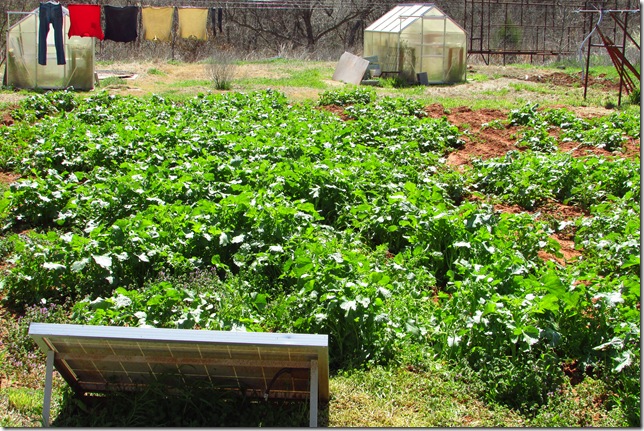
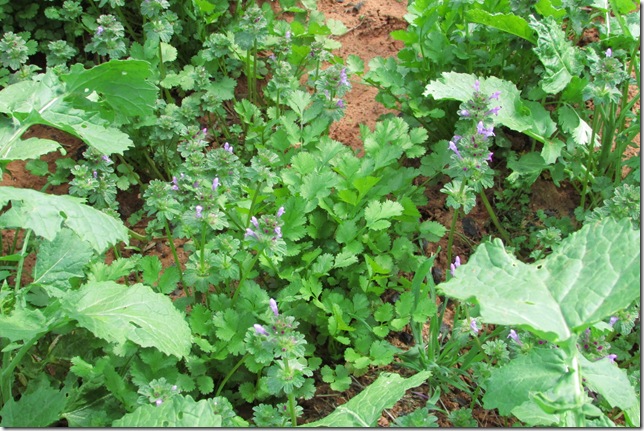
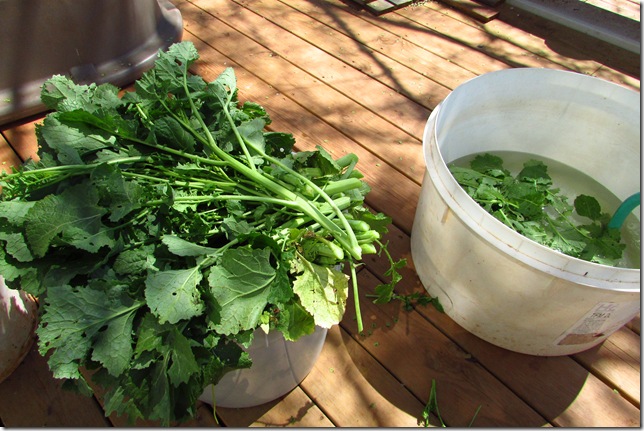
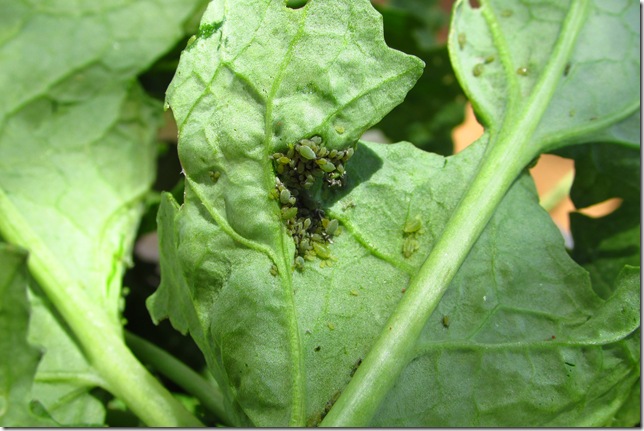
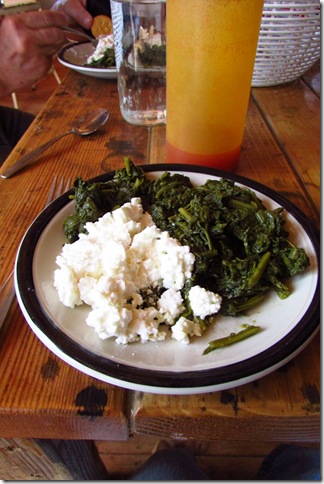
Wonderful post – so much to glean from your gardening and cooking skills 🙂 Duh, I never though of letting mustard go to seed and then using the seeds for mustard! You sound like an experienced cook – have you ever “preserved” your cilantro by freezing it chopped up and put in ice cube trays w/a little water? I love having it on hand for white ckn chili!
Sorry! Just saw that you’re off grid – no freezer at your home! I wonder if you could can cilantro with broth or tomatoes and keep the flavor?
It seems to be a very delicate flavor, despite it’s boldness when fresh. I do have access to a freezer but am always on the lookout for hard-core off-grid ways. I think in the cooler months it might keep in the root cellar chopped up in an oil base, like pesto. I have a book, Preserving Food Without Freezing Or Canning, that gives some ideas for this type of storage. It seems like I’m out of it, though, during the hottest months when the tomatoes are bountiful. Maybe eventually my seed that I save every year will adapt to continued production through the hotter months.